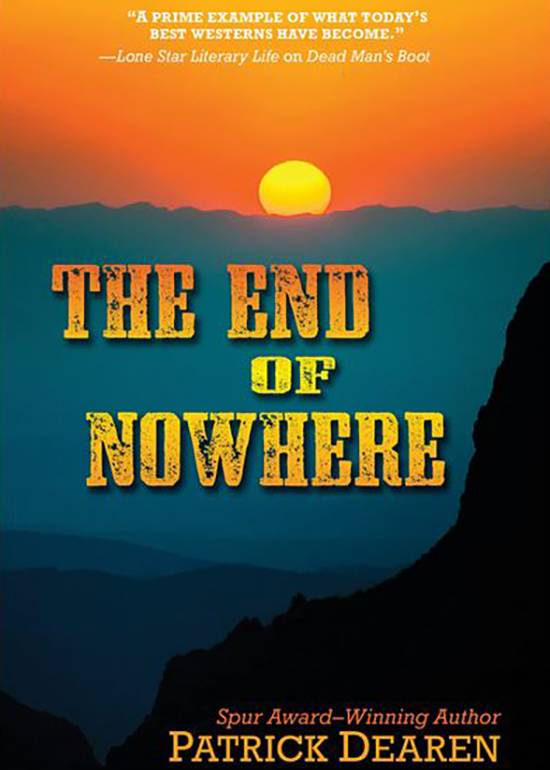Out West and Outdated

The End of Nowhere
by Partick Dearen
Waterville: Five Star Publishing, 2022.
223 pp. $25.95 Paperback.
Reviewed by
Jennifer Ramirez
The End of Nowhere by Patrick Dearen takes a dark piece of Mexican American history and inserts a white man to save the day. Set in Texas in 1917, the story follows Jack Landon, an award-winning reporter. When Jack witnesses the drowning of a young boy he is confronted about his vulture-like ways of reporting the story. Jack goes on a downward spiral re-examining his life, his choices, and what he wants in the future. This leads to Jack suddenly leaving his old life behind. He ends up in Esperanza, a small town on the Mexican border where the population is mostly Mexican American. From there, the story shows Jack making a life for himself in Esperanza. He becomes an English teacher, develops feelings for a local woman, Maria, helps the town grow and thrive, and learns to care for the people that took him in at his lowest moment.
The most interesting aspect comes in the inspiration behind what really happened in Porvenir, Texas, in 1918. The town of Esperanza is under constant threat by the Texas Rangers based on bigotry. This is portrayed realistically and the racism the people of Esperanza face, the motivation to learn English by Maria, all make sense within the context of the story. Jack Landon is a proxy character, as an outsider, to get information and to learn about what is happening in this small, easily ignored town. The events that take place are devastating, and the emotion Dearen uses is good and easy to follow. It’s hard to say how accurately Dearen portrays events in the story, as the real life events are not well documented, but the addition of an author’s note at the end includes more information about what happened and adds credibility.
Of course, the book is not without faults. The biggest of all being Jack Landon who is presented as a hero to the people of Esperanza. This can come off as using the white savior trope. Jack helps solve many of the town’s problems, which no one else can apparently solve. He is framed as an unlikely and hesitant hero for every good thing he does. Yet, it’s hard to ignore that Jack is obviously different from the rest of the town, he’s white and well educated. Jack is elevated and treated as a saving grace. Sure, Jack grows and changes while in Esperanza; he becomes happier and integrates himself into the community, but the trope remains tiresome.
All of that said, the book is a light, quick read. The chapters are short and easy to get through. The point of view switching helps to understand the characters and gives a better sense of motivation and feelings. For being set in the American Southwest, with an emphasis on Mexican American history, The End of Nowhere fits nicely alongside other westerns of yesteryear such as Louis L’Amour’s The Burning Hills. If one has no qualms about outdated tropes then The End of Nowhere is perfect for those wanting something that heralds back to the time of John Wayne and Roy Rogers. However, with these tired tropes, this book isn’t for those wanting something new from the genre.
Jennifer Ramirez is a graduate student at Texas State University.
